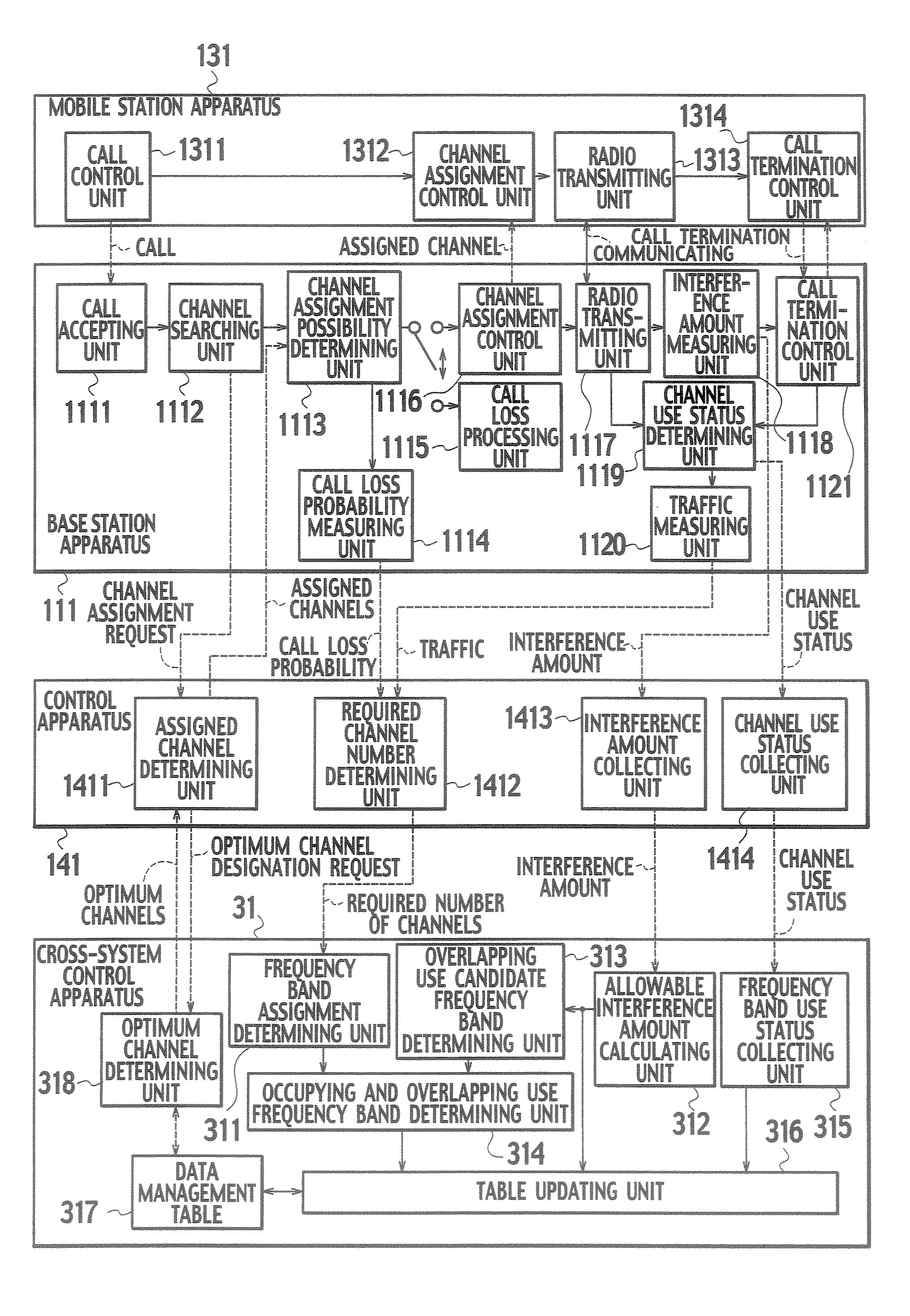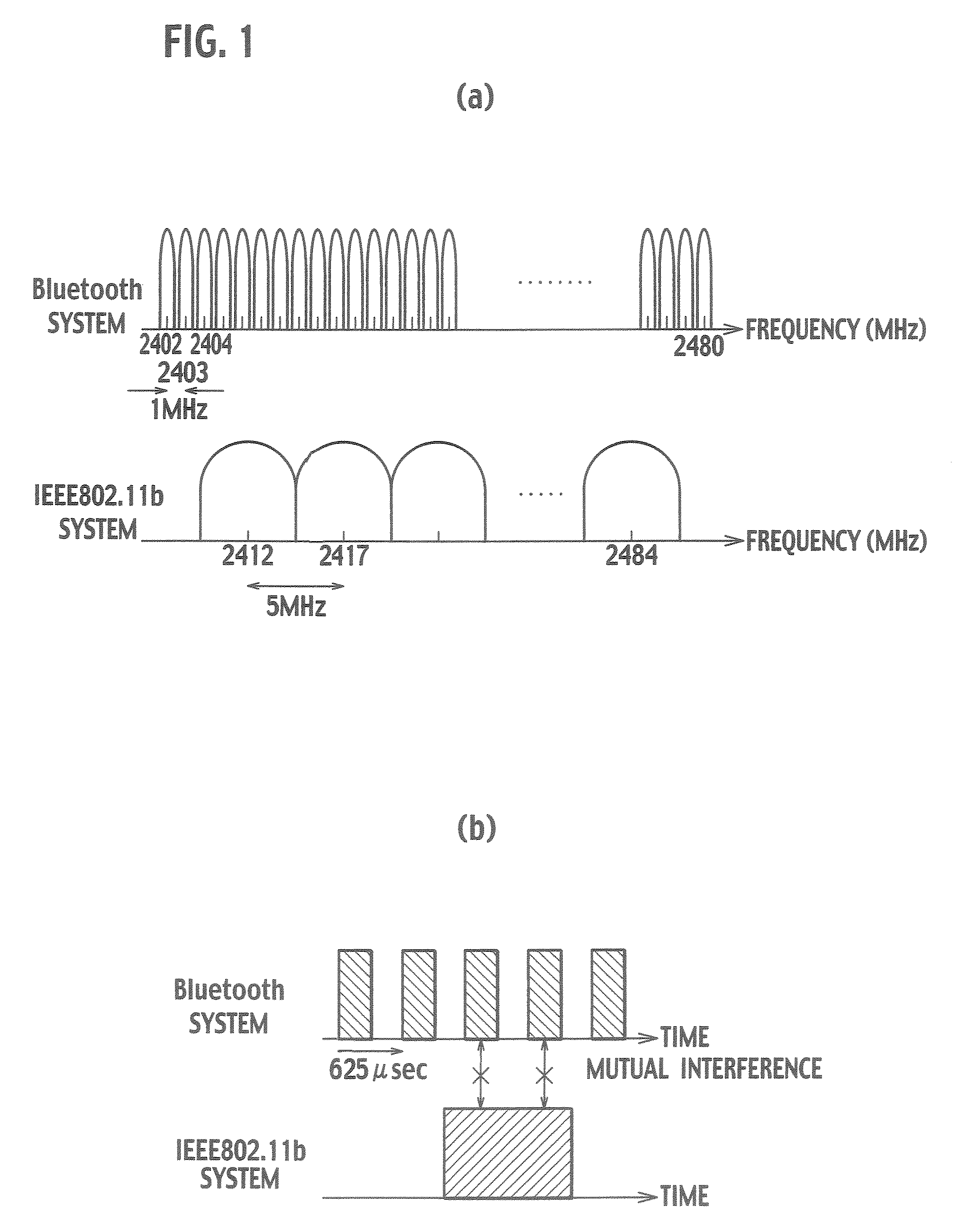Frequency channel assignment system, base station, control station, inter-system common control apparatus, frequency channel assignment method, and control method
a frequency channel and assignment system technology, applied in the field of frequency channel assignment system, control station, inter-system common control apparatus, and frequency channel assignment method, can solve the problems of increasing the deterioration rate of communication quality, loss of data, and difficulty in reserving frequency bands, so as to avoid inter-system interference and avoid inter-system interference.
- Summary
- Abstract
- Description
- Claims
- Application Information
AI Technical Summary
Benefits of technology
Problems solved by technology
Method used
Image
Examples
modification 1
(Modification 1)
[0213]With reference to FIGS. 17 and 18, a frequency channel assignment system according to modification 1 will be described.
[0214]As shown in FIG. 17, the frequency channel assignment system according to the modification 1 includes a plurality of mobile stations 131 to 135 and 231 to 235, a plurality of base stations 111 to 113 and 211 to 213, control stations 14 and 24 for controlling the base stations 111 to 113 and 211 to 213, and a inter-system common control station 3.
[0215]As shown in FIG. 17, the inter-system common control station 3 is connected to the control stations 14 and 24 via networks, and the control stations 14 and 24 are connected to the base stations 111 to 113 and 211 to 213 via networks, and the base stations 111 to 113 and 211 to 213 are connected to the mobile stations 131 to 135 and 231 to 235 located in cells 121 to 123 and 221 to 223 via radio channels.
[0216]In the modification 1, the inter-system common control station 3 has the function o...
modification 2
(Modification 2)
[0231]With reference to FIGS. 19 and 20, a frequency channel assignment system according to modification 2 will be described.
[0232]As shown in FIG. 19, the frequency channel assignment system according to the modification 2 is configured such that radio communications systems 1 and 2 are controlled under management of control stations 14 and 24 which manage a plurality of base stations 111 to 113 and 211 to 213 without a intersystem common control station 3.
[0233]In this case, at least one of the control stations 14 and 24 managing the base stations 111 to 113 and 211 to 213 includes an inter-system common control apparatus 31. The inter-system common control apparatus 31 is connected to other control apparatuses 141 and 241 to share information, so that the radio communications system 1 and the radio communications system 2 are unified.
[0234]The inter-system common control apparatus 31 is configured to determine frequency bands or frequency channels, based on inform...
modification 3
(Modification 3)
[0246]With reference to FIGS. 21 and 22, a frequency channel assignment system according to modification 3 will be described.
[0247]As shown in FIG. 21 the frequency assignment system according to this embodiment is configured such that radio communications systems 1 and 2 manage and control frequency bands and frequency channels for use by negotiations between base stations, without a inter-system common control station 3 and control stations 14 and 24.
[0248]In the frequency assignment system according to this embodiment, base stations 111 to 113 in at least one radio communications system of a plurality of radio communications systems located in the same region, using the same frequency band include inter-system common control apparatuses 311 to 313 and control apparatuses 1411 to 1413, respectively.
[0249]The inter-system common control apparatuses 31 are connected to the inter-system common control apparatuses 31 in other base stations 11 and base station apparatus...
PUM
 Login to View More
Login to View More Abstract
Description
Claims
Application Information
 Login to View More
Login to View More - R&D
- Intellectual Property
- Life Sciences
- Materials
- Tech Scout
- Unparalleled Data Quality
- Higher Quality Content
- 60% Fewer Hallucinations
Browse by: Latest US Patents, China's latest patents, Technical Efficacy Thesaurus, Application Domain, Technology Topic, Popular Technical Reports.
© 2025 PatSnap. All rights reserved.Legal|Privacy policy|Modern Slavery Act Transparency Statement|Sitemap|About US| Contact US: help@patsnap.com



